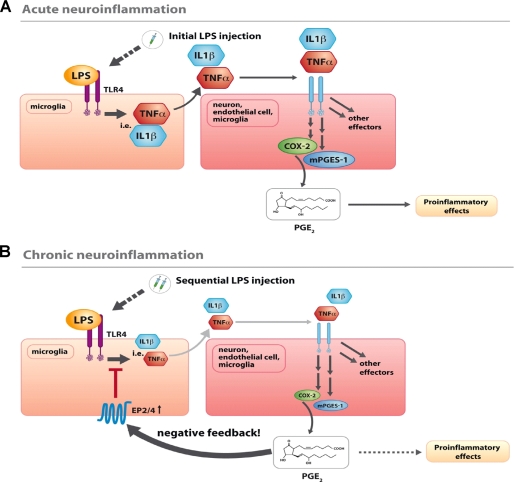FIGURE 7.
Schematic summary of the results showing the consequences of mPGES-1 mediated PGE2 synthesis for LPS-induced neuroinflammation. A, single intrathecal LPS injection, which simulates acute neuroinflammation, activates microglial toll-like receptor-4, causing a marked increase of cytokine release (i.e. TNFα and IL-1β). Via activation of their receptors they induce in microglia, neurons, or endothelial cells an up-regulation of COX-2 and mPGES-1 resulting in a selective synthesis of PGE2. Through neuronal EP2, PGE2 induces deleterious effects including neurodegeneration, excitotoxicity, or sensitization. B, if LPS was injected sequentially (24 h and 3 h before preparation), a situation of chronic neuroinflammation is mimicked. As a consequence, EP2 and EP4 are up-regulated in microglia enabling PGE2 to act via an additional pathway in microglia with a function as anti-inflammatory negative feedback regulator. As a proximate cause of this pathway, innate immune responses including cytokine and prostanoid synthesis induced by a second LPS injection are attenuated, promoting the resolution of neuroinflammation.

